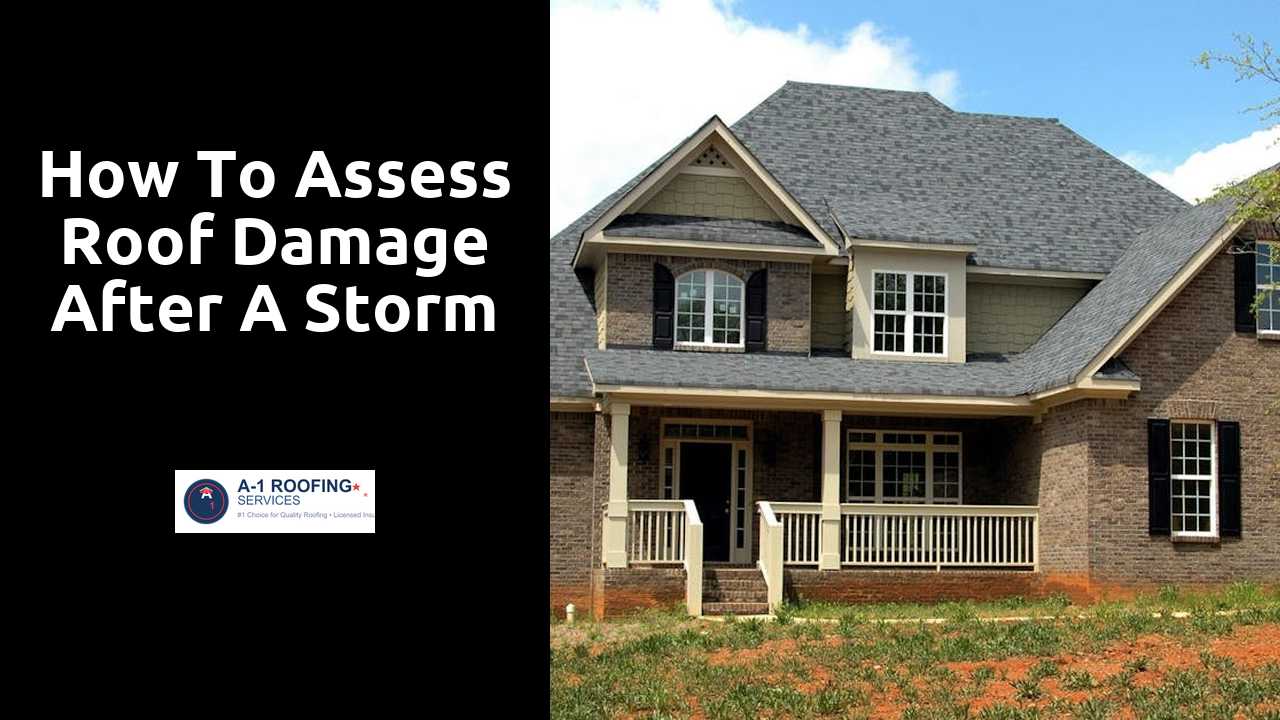
How to Assess Roof Damage After a Storm
Table Of Contents
Evaluating Structural Integrity
After a storm, it is crucial to assess the structural integrity of your roof to ensure it remains safe and sound. Begin by visually inspecting the roof from the ground. Look for any visible sagging or uneven surfaces which can indicate a severe issue. Shifts in the roof's alignment might have occurred due to extreme wind or heavy snowfall. Pay attention to the roofing materials as well; missing or damaged shingles can also signal underlying problems that need further examination.
Next, if you feel comfortable, use a ladder to get a closer look. Check for cracks or breaks in the fascia board and look for any exposed rafters. In addition, examine the attic for signs of water damage or leaks which can help identify compromised areas. If the roof structure exhibits any clear signs of failure, professional assessment becomes essential for ensuring safe living conditions. Neglecting these early indicators can lead to more extensive damage down the line, resulting in costly repairs or replacements.
Hop over here to discover more.
Signs of Compromised Roof Framework
A roof’s structural integrity can be jeopardized by severe weather events. Look for visible sagging or dips across the surface, as these may indicate underlying issues with support beams or trusses. Cracks in the ceiling inside the home or walls near the roofline can also signal potential structural problems. Additionally, inspect for any water stains or mold growth, as these often mean that water is penetrating the roof, compromising its ability to support weight and withstand further storm conditions.
Examine the roof's design and materials for signs of wear. Warped or buckled shingles may suggest that the roof is struggling against the forces directed at it. Missing shingles can expose the framework underneath to moisture and additional elemental damage. Furthermore, check for rust on metal components and rotting in wooden structures. Addressing these signs promptly can prevent more extensive repairs later on. Regular maintenance inspections will help identify vulnerabilities before they escalate into major issues.
Documenting Damage for Insurance Claims
After a storm, it’s important to document any damage thoroughly to support your insurance claims. Start by taking clear, well-lit photographs of the affected areas. Focus on capturing the overall condition of the roof, including close-ups of visible damage such as missing shingles, dents, or leaks. Make sure to photograph any debris that may have caused damage. These images can serve as crucial evidence when communicating with your insurer.
In addition to photographs, create a written inventory detailing the extent of the damage. Note specific areas of concern and any previous issues that may relate to your current situation. This documentation can help insurance adjusters understand the context of the damage. Keep all records organized, including receipts for any temporary repairs made after the storm. Having comprehensive documentation will facilitate the claims process and increase the likelihood of a successful outcome.
Tips for Taking Effective Photos
Capturing clear images of roof damage is essential for supporting an insurance claim. Start by using a camera or smartphone with a good resolution. Take photos from various angles to provide a comprehensive view of the damage. Close-up shots can showcase specific issues, while wider angles can convey the overall state of the roof. Pay attention to lighting; bright, sunny days offer better visibility, reducing shadows that could obscure details.
Before taking photographs, ensure the area is safe. If you can access the roof, use a sturdy ladder and stay cautious. Document any issues you see by taking before and after shots if repairs are made. Maintain a record of dates and times along with photographs, as this documentation can be crucial when dealing with insurance adjusters. Organize your images in a chronological order to simplify the process when submitting claims.
When to Call a Professional
Homeowners should consider seeking expert assistance when they notice significant damage or feel unsure about the extent of the issues. If there are large holes in the roof, sagging areas, or if the roof materials appear to have been extensively torn away, these are immediate indicators that a professional assessment is necessary. Attempting to repair severe damages without proper training can lead to further complications or unsafe conditions.
In addition to visible damage, signs such as persistent leaks weeks after a storm can suggest deeper structural problems that require professional evaluation. Homeowners should also be cautious of unseen issues that might arise, like water damage within the attic or mold growth. A certified roofer can provide a comprehensive inspection, ensuring that all aspects of the roof's integrity are thoroughly examined and addressed.
Red Flags Indicating Expert Assistance Needed
Homeowners should be vigilant for certain warning signs that indicate the need for professional roof assessment. If you notice extensive water stains on your ceilings or walls, this could suggest that the roof is allowing moisture to infiltrate your home. Broken or missing shingles can also be a clear indication of damage. These visible signs often point to underlying issues that may not be immediately apparent.
Another critical red flag is the presence of sagging areas on the roof. A dip in the roofline might suggest structural damage that requires expert evaluation. Additionally, if you encounter mold or mildew growth in your attic or on the roof itself, it often points to prolonged moisture issues that need to be addressed by professionals. Ignoring these indicators could lead to more severe problems down the line.
Related Links
Steps to Take Before Starting Roof Repair ProjectsBest Practices for Repairing Asphalt Shingle Roofs